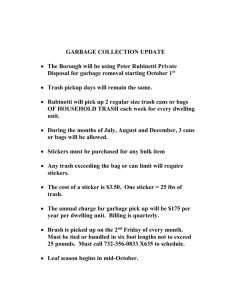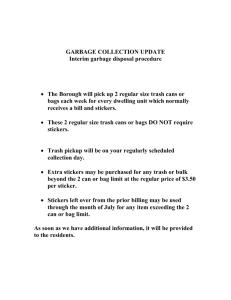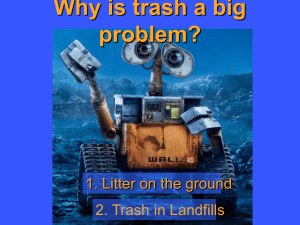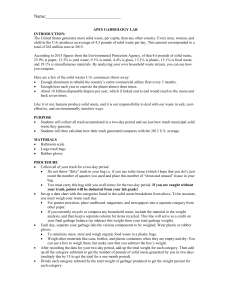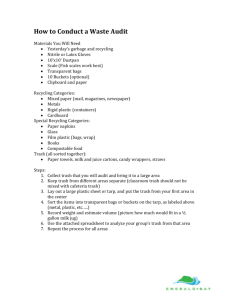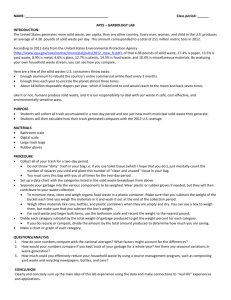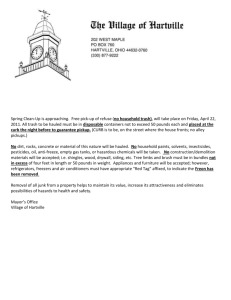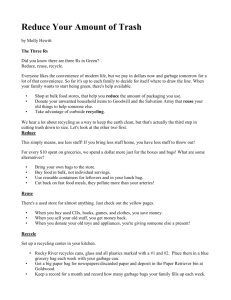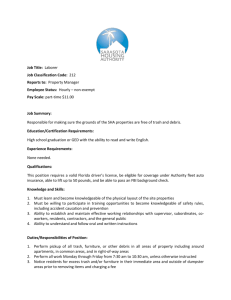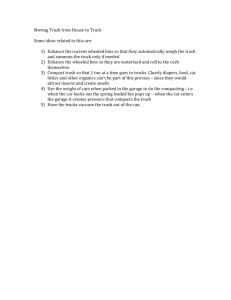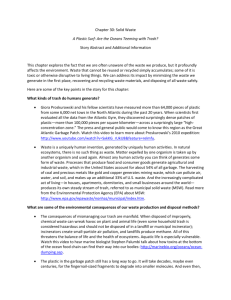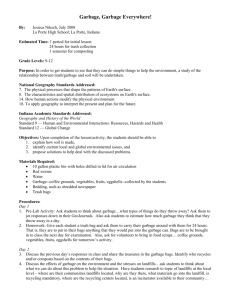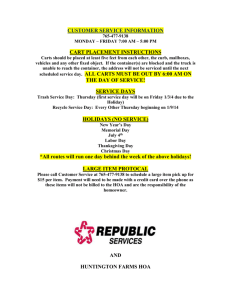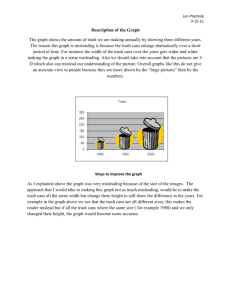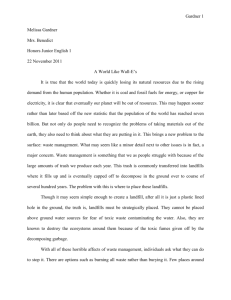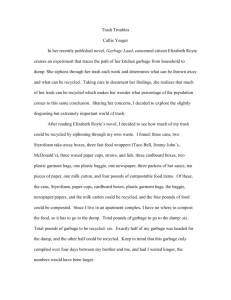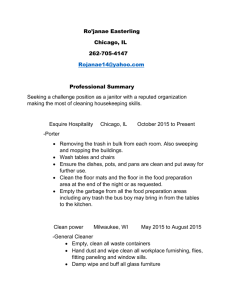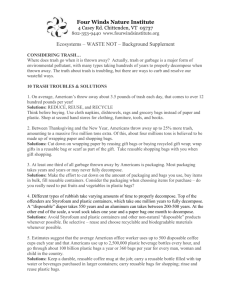Mentor Text: Why I Lived With My Garbage for a Year By Brennan
advertisement
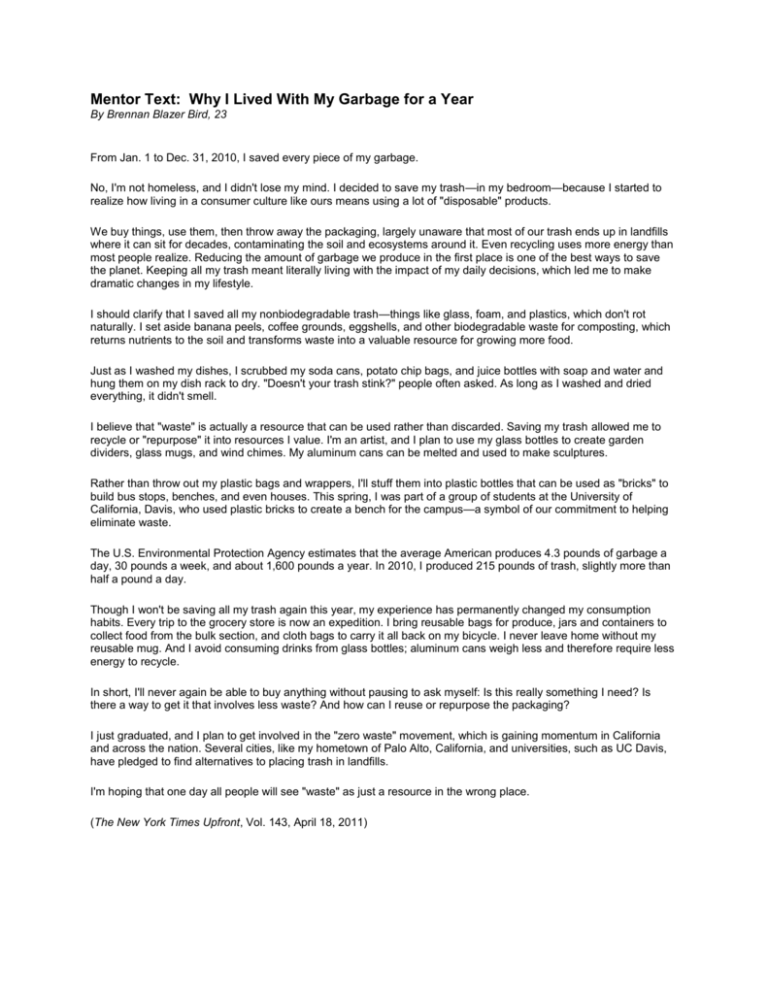
Mentor Text: Why I Lived With My Garbage for a Year By Brennan Blazer Bird, 23 From Jan. 1 to Dec. 31, 2010, I saved every piece of my garbage. No, I'm not homeless, and I didn't lose my mind. I decided to save my trash—in my bedroom—because I started to realize how living in a consumer culture like ours means using a lot of "disposable" products. We buy things, use them, then throw away the packaging, largely unaware that most of our trash ends up in landfills where it can sit for decades, contaminating the soil and ecosystems around it. Even recycling uses more energy than most people realize. Reducing the amount of garbage we produce in the first place is one of the best ways to save the planet. Keeping all my trash meant literally living with the impact of my daily decisions, which led me to make dramatic changes in my lifestyle. I should clarify that I saved all my nonbiodegradable trash—things like glass, foam, and plastics, which don't rot naturally. I set aside banana peels, coffee grounds, eggshells, and other biodegradable waste for composting, which returns nutrients to the soil and transforms waste into a valuable resource for growing more food. Just as I washed my dishes, I scrubbed my soda cans, potato chip bags, and juice bottles with soap and water and hung them on my dish rack to dry. "Doesn't your trash stink?" people often asked. As long as I washed and dried everything, it didn't smell. I believe that "waste" is actually a resource that can be used rather than discarded. Saving my trash allowed me to recycle or "repurpose" it into resources I value. I'm an artist, and I plan to use my glass bottles to create garden dividers, glass mugs, and wind chimes. My aluminum cans can be melted and used to make sculptures. Rather than throw out my plastic bags and wrappers, I'll stuff them into plastic bottles that can be used as "bricks" to build bus stops, benches, and even houses. This spring, I was part of a group of students at the University of California, Davis, who used plastic bricks to create a bench for the campus—a symbol of our commitment to helping eliminate waste. The U.S. Environmental Protection Agency estimates that the average American produces 4.3 pounds of garbage a day, 30 pounds a week, and about 1,600 pounds a year. In 2010, I produced 215 pounds of trash, slightly more than half a pound a day. Though I won't be saving all my trash again this year, my experience has permanently changed my consumption habits. Every trip to the grocery store is now an expedition. I bring reusable bags for produce, jars and containers to collect food from the bulk section, and cloth bags to carry it all back on my bicycle. I never leave home without my reusable mug. And I avoid consuming drinks from glass bottles; aluminum cans weigh less and therefore require less energy to recycle. In short, I'll never again be able to buy anything without pausing to ask myself: Is this really something I need? Is there a way to get it that involves less waste? And how can I reuse or repurpose the packaging? I just graduated, and I plan to get involved in the "zero waste" movement, which is gaining momentum in California and across the nation. Several cities, like my hometown of Palo Alto, California, and universities, such as UC Davis, have pledged to find alternatives to placing trash in landfills. I'm hoping that one day all people will see "waste" as just a resource in the wrong place. (The New York Times Upfront, Vol. 143, April 18, 2011)
